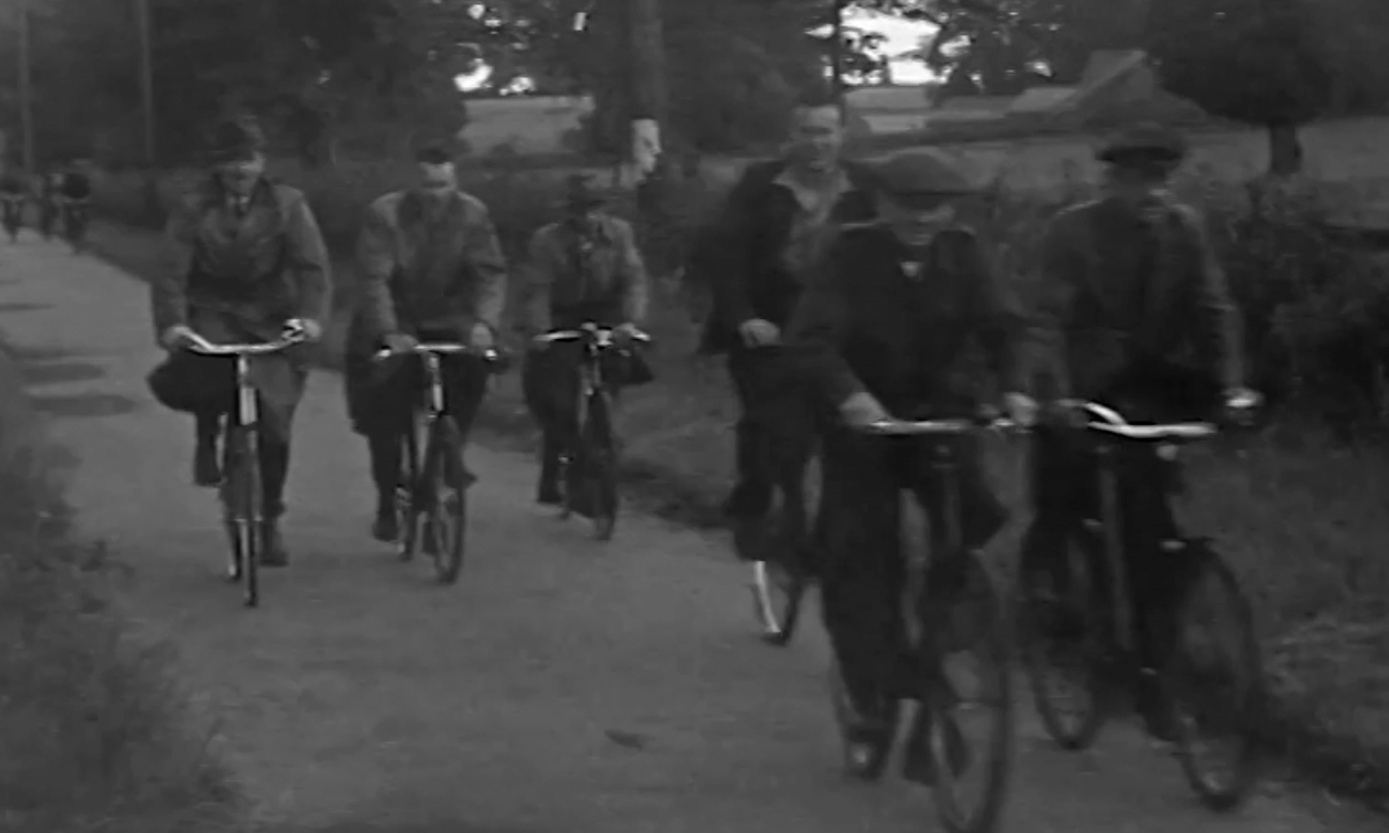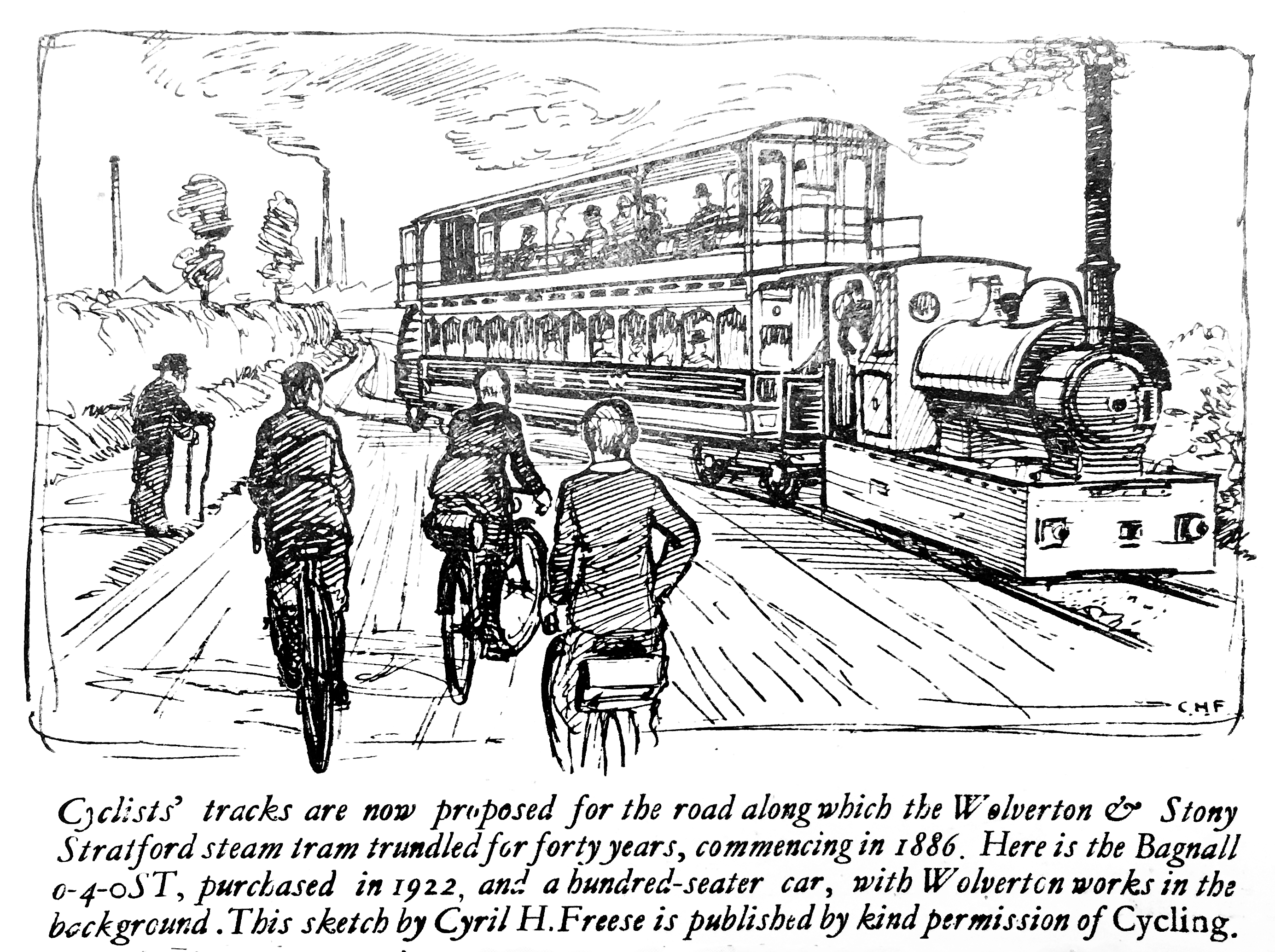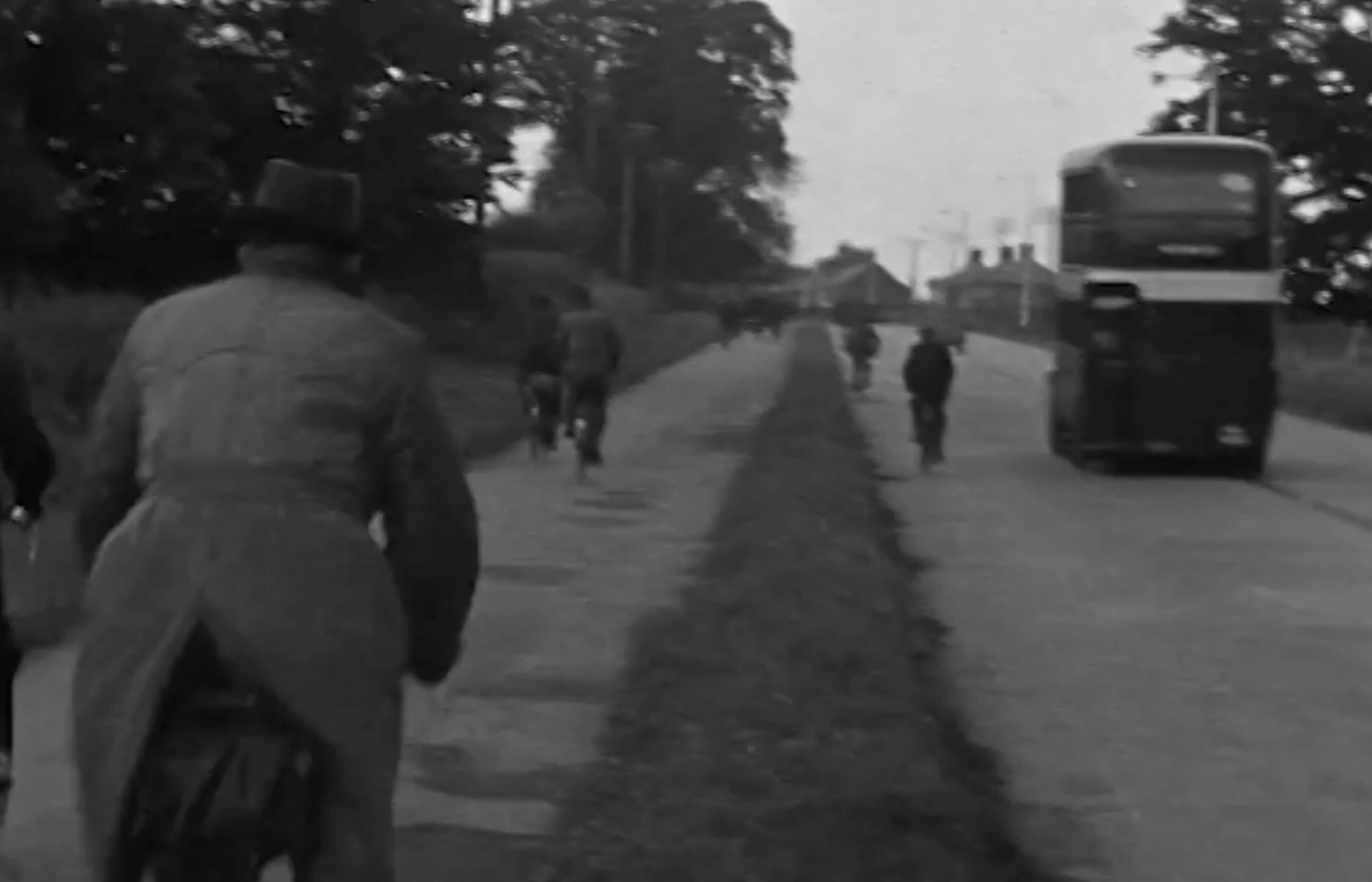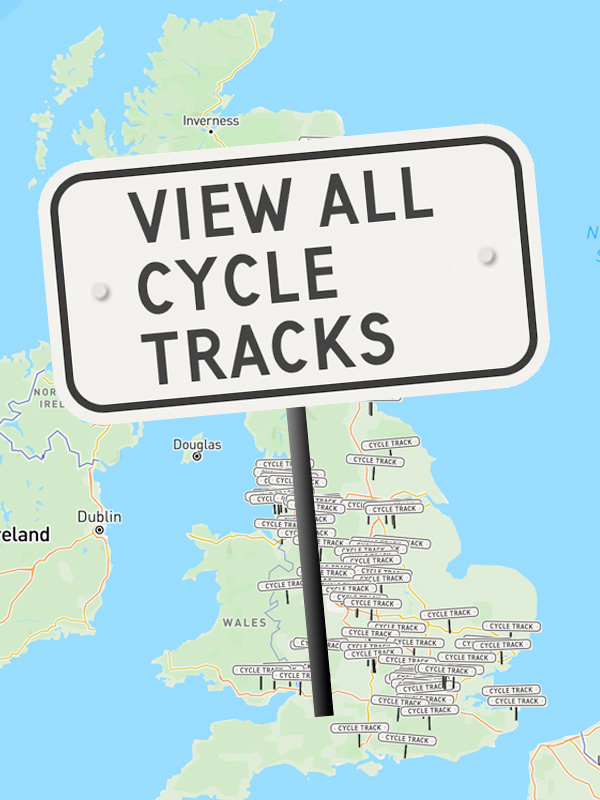
1950s amateur film footage shows the Stony Stratford to Wolverton cycle track.
The Stony Stratford to Wolverton cycle track was operational by the summer of 1934, the second to open in the UK following the trial track on Western Avenue in London. It was easy to build because works were already due to be carried out on the Wolverton Road but mainly because it involved the resurfacing of an existing roadside track, the short commuter route of a steam-powered tramway, dismantled eight years earlier.
This tramway ran for less than a mile from Stony Stratford High Street to the variety of works in Wolverton, including an envelope factory and, most especially, a large print works.
Because of later remodelling of Wolverton Road little of the cycle track remains. The tramway sometimes ran to the north of the road and sometimes to the south. It’s not known which parts of the former tramway were used by the repurposed cycle track although a period report said it was on the “south side [of] the new carriageway.”

“What promises to be the most pleasant stretch of highway in the Wolverton Urban Area is the part that leads from Wolverton to Stony Stratford,” said a newspaper in March 1935.
“Already the highway has made fame for the excellent cycle track that is prominent upon one side of the roadway, where cyclists have a pathway that makes for safety. On the other side of the highway a pleasant walk can now be enjoyed by pedestrians in comfort to Stony Stratford without inconvenience.”
The repurposing of the defunct tramway — the rails of which had been uplifted in 1926 — was the idea of Sir Leonard West, chairman of Buckinghamshire County Council. His suggestion that a “cycle track might [be] provided alongside the reconstructed section of the Wolverton-Stony Stratford Road was conveyed to the Ministry [of Transport] and has been approved by them,” a newspaper reported in July 1934.
“A census of traffic taken on 6th April last between 6a.m. and 7p.m., at a point 100 yards west McCorquodale’s Printing Works, Wolverton, shows the number of pedal cyclists at 1,379, out of a total number 2,546 of all classes of vehicles,” reported the Buckingham Advertiser and Free Press.
The newspaper noted that the council’s highways instructed “Messrs. Hadsphaltic Construction Company, Ltd., the contractors for the road works, to construct a cycle track 10ft. wide the south side the new carriageway … for a length of approximately 1,700 yards … surfaced with tarmacadam.”

Cyclists on the road and on the Stony Stratford to Wolverton cycle track.
The steam tramway opened for business in 1887 but was not a commercial success. Its rails were dug up in 1891. A successor company resurrected the line in the late 1890s and it ran — in fits and starts — through to 1926, with the route of the tramway altered here and there to accommodate motorists.
An amateur film shot during the 1950s shows that the Wolverton cycle track was still in use at that time. The clip starts with a wide shot showing cyclists using the cycle track but also the road. Very few motor vehicles are present but there are many cyclists.
On the road can be seen two young men on lightweight, drop-bar roadsters riding side by side; two women with headscarves on sit-up-and-beg bikes, shopping bags dangling from the handlebars riding side by side; and six other cyclists but too far away to see details.
On the cycle track there are fifteen or so cyclists, most of them riding side by side. A close-up shot shows cyclists on the cycle track. There are two working men in flat caps riding side by side on sit-up-and-beg bikes followed by a man in a suit with an open shirt riding alone and followed by two men riding side by side, with another just behind. Two of the men are wearing trilby hats; all three are wearing ties and sporting mackintosh coats — middle management perhaps? The camera pans round to reveal the cyclists on the road being overtaken slowly and widely by a bus.







